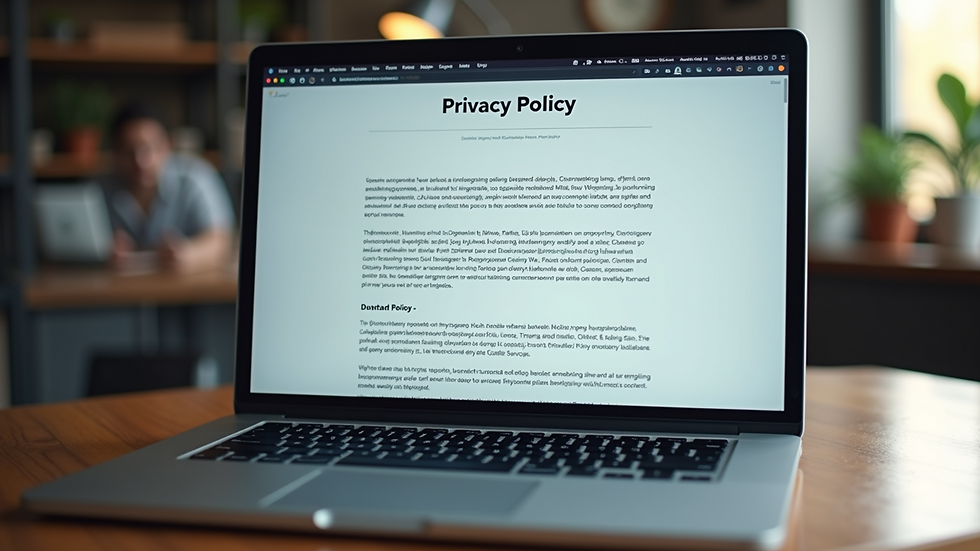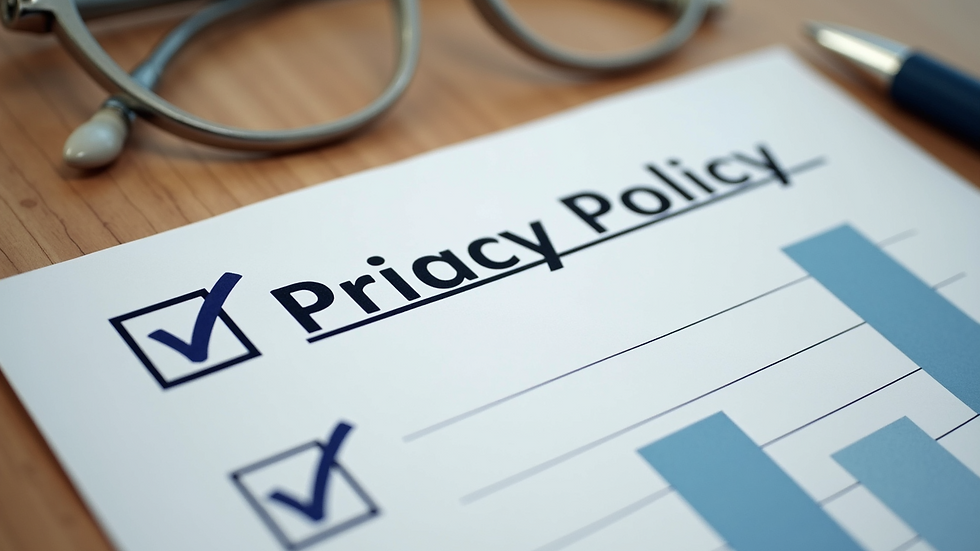How to Create an Effective Privacy Policy
- djsdetailing25
- 6 days ago
- 4 min read
Creating a privacy policy is a crucial step for any website or business that collects user data. It builds trust, ensures transparency, and helps comply with legal requirements. However, many find the process confusing or overwhelming. This guide will walk you through the essential privacy policy guidelines to help you craft a clear, effective, and legally sound privacy policy.
Understanding Privacy Policy Guidelines
A privacy policy is a statement that explains how your website or business collects, uses, stores, and protects personal information. It is not just a legal formality but a communication tool that reassures users about their data safety.
Here are some key privacy policy guidelines to keep in mind:
Clarity and Simplicity: Use plain language. Avoid legal jargon that can confuse readers.
Transparency: Clearly state what data you collect and why.
User Rights: Inform users about their rights regarding their data, such as access, correction, or deletion.
Data Security: Explain how you protect user data from unauthorized access.
Third-Party Sharing: Disclose if and how you share data with third parties.
Compliance: Ensure your policy aligns with relevant laws like GDPR, CCPA, or others depending on your location.
By following these guidelines, you create a privacy policy that is both user-friendly and compliant.

Key Elements to Include in Your Privacy Policy
An effective privacy policy should cover several critical components. Here’s a breakdown of what to include:
1. Information Collection
Specify what types of personal information you collect. This can include:
Names, email addresses, phone numbers
Payment information
IP addresses and device information
Cookies and tracking data
Be specific about whether the data is collected directly from users or through automated means.
2. Use of Information
Explain how you use the collected data. Common uses include:
Providing and improving services
Personalizing user experience
Sending marketing communications (with consent)
Complying with legal obligations
3. Data Sharing and Disclosure
If you share data with third parties, disclose who they are and why. Examples include:
Service providers (e.g., payment processors)
Advertising partners
Legal authorities when required
4. Data Retention
State how long you keep user data and the criteria for deletion.
5. User Rights and Choices
Inform users about their rights, such as:
Accessing their data
Correcting inaccuracies
Opting out of marketing emails
Deleting their data
6. Security Measures
Describe the security practices you have in place to protect data, such as encryption or secure servers.
7. Policy Updates
Explain how you will notify users about changes to the privacy policy.
Including these elements ensures your privacy policy is comprehensive and trustworthy.

Which privacy policy generator is best?
For those who want to simplify the process, privacy policy generators can be a great help. These tools create customized privacy policies based on your business type and data practices. Here are some popular options:
Termly: Offers customizable templates and compliance tools.
Iubenda: Provides multi-language support and covers various regulations.
PrivacyPolicies.com: Easy to use with free and paid options.
Shopify Privacy Policy Generator: Ideal for e-commerce businesses.
When choosing a generator, consider:
The specific regulations you need to comply with.
Whether the tool updates policies automatically.
Customization options to reflect your unique data practices.
Using a generator can save time and reduce errors, but always review the final policy carefully to ensure it fits your needs.

Best Practices for Privacy Policy Creation
To create a privacy policy that works well for your audience and business, follow these best practices:
Be Honest and Transparent: Avoid vague statements. Users appreciate honesty about data use.
Keep It Updated: Regularly review and update your policy to reflect changes in your practices or laws.
Make It Accessible: Place the privacy policy link prominently on your website, such as in the footer or during account registration.
Use Clear Formatting: Break text into sections with headers, bullet points, and short paragraphs for easy reading.
Provide Contact Information: Include a way for users to reach out with questions or concerns about privacy.
Remember, effective privacy policy creation is about building trust and protecting both your users and your business.
For a practical start, you can explore privacy policy creation tools and resources that guide you step-by-step.
Enhancing User Trust Through Your Privacy Policy
A well-crafted privacy policy does more than fulfill legal requirements - it builds confidence. When users understand how their data is handled, they are more likely to engage with your services.
Consider these tips to enhance trust:
Use Friendly Language: Write as if you are speaking directly to the user.
Highlight User Control: Emphasize how users can manage their data preferences.
Showcase Security Efforts: Briefly explain your commitment to data protection.
Link to Related Policies: If you have terms of service or cookie policies, link them for transparency.
By making your privacy policy a positive part of the user experience, you encourage loyalty and reduce concerns about data privacy.
Creating an effective privacy policy is a vital step in today's digital landscape. By following these privacy policy guidelines, including clear explanations, transparency, and user rights, you can protect your business and foster trust with your audience. Use available tools wisely, keep your policy updated, and always prioritize clarity to make privacy a strength rather than a hurdle.


Commenti